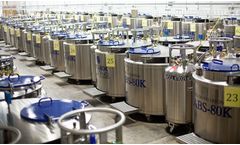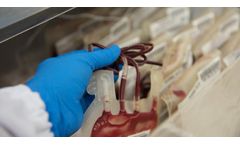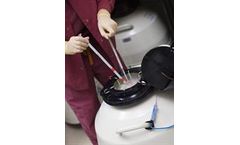Refine by
Cryopreservation Articles & Analysis
13 articles found
· Stable and Scalable Systems – The ability to cryopreserve organoids in biobanks and expand them indefinitely arises from their self-renewal capabilities, stem cell differentiation, and inherent self-organization, resulting in a reliable and consistent research model. ...
Innovations in preservation techniques, such as cryopreservation, have also improved the viability of these cells for future use. ...
This service includes free consultation, cell line evaluation, sgRNA design and vector construction, homologous donor construction, cell transfection and selection, cell expansion and cryopreservation. Both pool cell and cell clone are available. We will work closely to ...
Since these cells mimic the properties of the liver, researchers can evaluate the metabolism, drug-drug interaction and toxicity of drug candidates in a cost-effective manner. Pooled Human Cryopreserved Hepatocytes In drug development, primary human hepatocytes are the most suitable system for uptake, metabolism, clearance, hepatotoxicity, drug-drug interaction, and other ...
How are Biological Samples Stored? Cryopreservation is the most commonly used method for freezing and storing biological samples. This method most often uses liquid nitrogen (LN2) to achieve the ultra-low temperature necessary for cryopreservation, usually between -80°C and -196°C. Biorepositories use cryogenic freezers and LN2 to achieve and maintain ...
The remaining white blood cells and platelets are stored in a cryopreservation solution and frozen at temperatures below -80°C. The process keeps the cells alive until they are needed for transfusion. ...
The Cryopreservation Process The Cryopreservation Process is where biological matter (cells, tissue, organs, etc) is preserved by cooling to a very low temperature. ...
Findings were then validated in cryopreserved peripheral blood mononuclear cell samples from the same study, as well as an independent CyTOF dataset from a published metastatic melanoma trial. ...
Postimplantation immune response has also been reported in patients in whom cryopreserved vessels have been used, possibly leading to graft durability issues. ...
I believe the pandemic has also increased the suitability for hospitals and clinic to store cryopreserved therapies, often a bottleneck in providing “off the shelf” technology. A lot of research, not only from our laboratory but others, has gone into improving the functionality of cell-based products that undergo a cryopreservation step. Our novel ...
Historically, autogenous vein or cryopreserved cadaveric allograft has been used instead of extra-anatomic bypass with prosthetic material outside the infected wound.2,3 Recently, the use of a bioengineered human acellular vessel (HAV) has been documented to have low infections rates. ...
There are many reasons couples may select cryopreservation of embryos, including: A second chance if the IVF treatment fails the first time around The desire to have another child As a precaution before undergoing medically necessary procedures that might the reduce the odds of a successful pregnancy, such as cancer treatment Opportunity to use embryos in medical research ...
New techniques of in vitro and cryopreservation have been developed to improve the long-term conservation of coffee. ...










